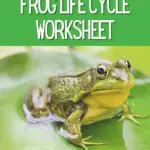As parents, it’s often easiest to teach biological processes to kids when we have a firm grasp on the content ourselves.
Topics like learning the frog life cycle stage or the butterfly life cycle may seem elementary, but when faced with myriad questions and excitement, it’s easy to become overwhelmed and miss something.
Learning alongside your child is encouraged, of course, but sometimes it can be difficult to read, decipher, contemplate and explain information right on the spot.
We’ve created a frog life cycle printable and provided a general outline of the process. In case your third-grade science is a little bit rusty and you need a refresher, this should help.
Also, check out this 30 day science activity planner for more science experiments and activities to do with your kids.
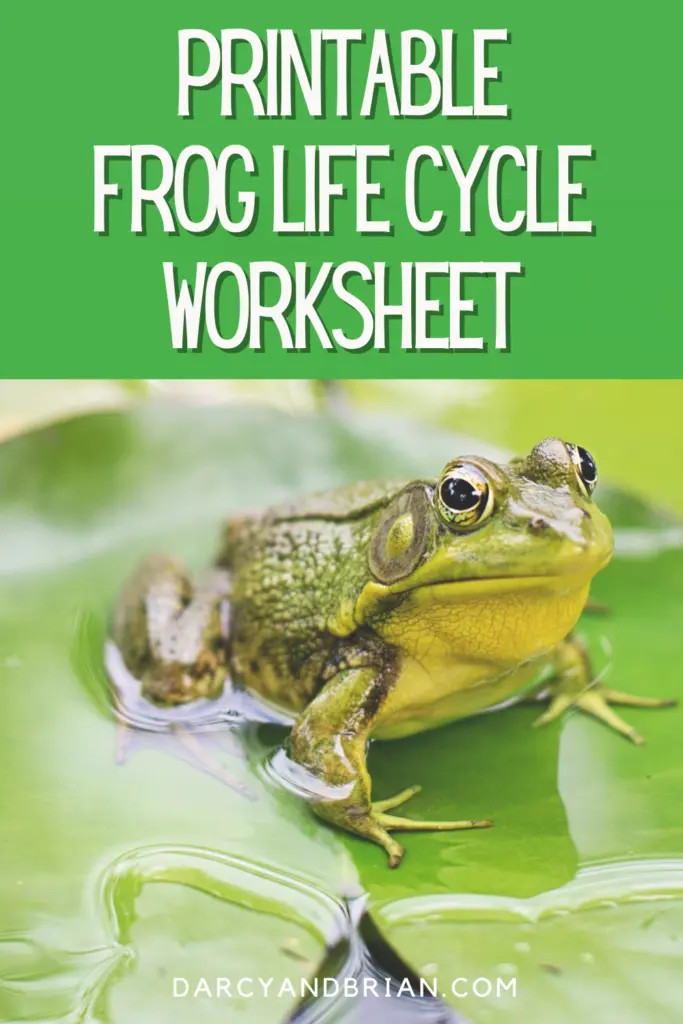
This post contains affiliate links. As an Amazon Associate and a participant in other affiliate programs, we earn a commission on qualifying purchases.
Teaching Kids About the Stages of a Frog Life Cycle
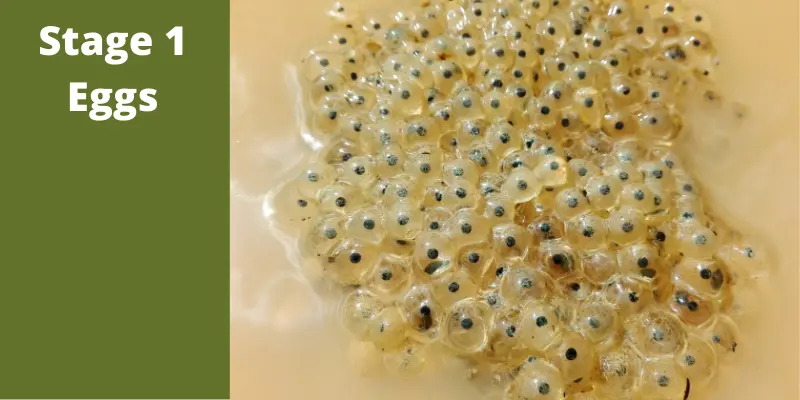
Frog Life Cycle Stage One – Egg
Depending on the species, a female frog will lay what is called a clutch of eggs in or near a body of water.
Each clutch of eggs is covered by a jelly-like substance designed to protect them from prey.
According to the Frog Pets website – a great site if you’re a soon-to-be frog pet owner – frogs lay anywhere between 2 – 12 eggs for a Poison-dart Frog (native to South America) all the way to a range of 12,000 – 20,000 eggs for a North American Bullfrog.
After anywhere from one to three weeks after fertilization, the eggs will hatch.
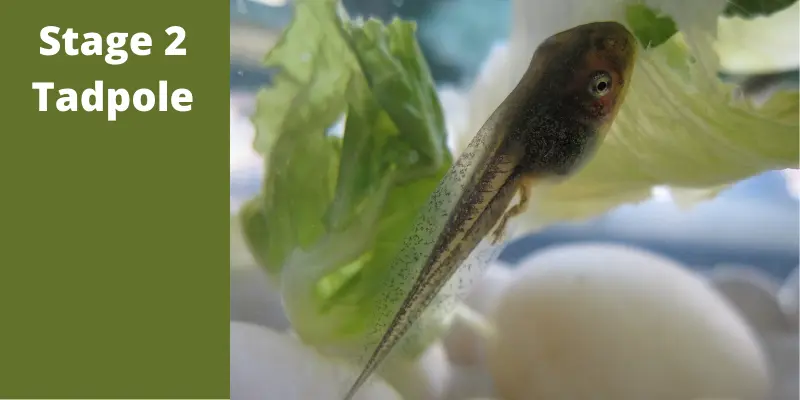
Stage Two of the Life Cycle – Tadpole
Once the egg is hatched, a tadpole emerges. It initially has no legs and uses its gills to breathe.
The tadpole moves much like a fish, using its long tail to swim and it eats small plants and surface algae.
After about 9 weeks, the tadpole has developed 2 hind legs on its long body with a distinct head. The hind legs allow it to jump around.
Tadpoles begin to resemble tiny frogs at this stage, which takes about three weeks from start to finish.
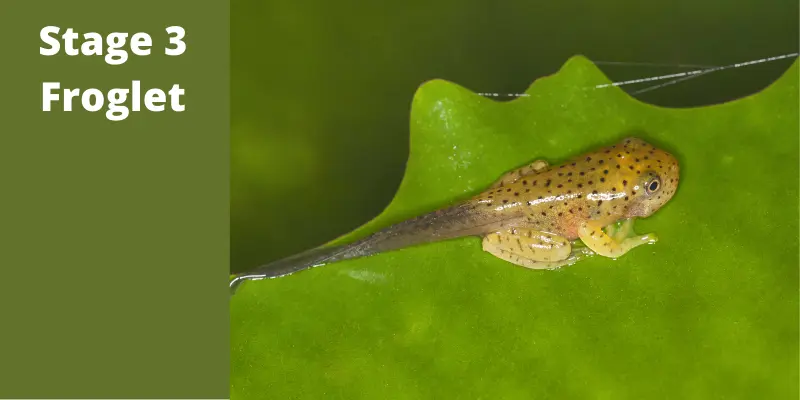
Frog Life Cycle Stage Three – Froglet
In the third stage of the life cycle, a froglet has a developed set of lungs. Two front legs also begin to grow and its long tail slowly becomes shorter.
At this point, it will begin practicing breathing out of the water by coming to the surface occasionally to breathe air.
Throughout its life, the froglet has been storing nutrients in its tail and during this stage of life, begins to use these nutrients as food.
At around 12 weeks the froglet truly begins to resemble a young frog.
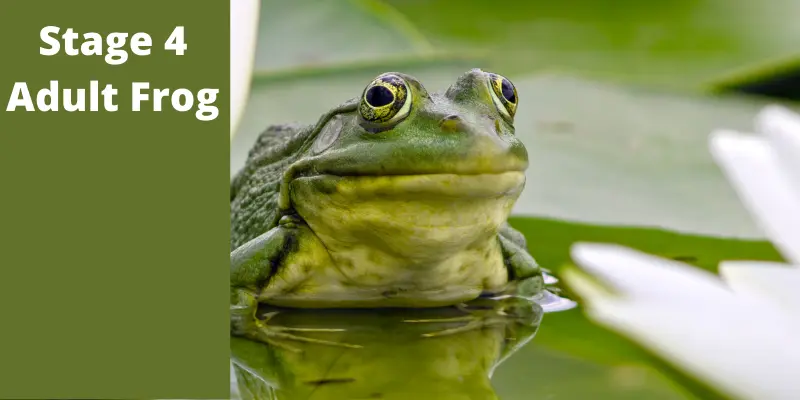
Stage Four of the Life Cycle – Adult Frog
The fourth and final stage of the frog life cycle results in an adult frog. It’s taken about 12 – 16 weeks to get to this point.
The tail has disappeared and the adult frog begins to eat insects and small animals.
Later, the female frog will return to the water to lay its own eggs. With this, the frog life cycle begins again.
How to Use the Frog Life Cycle Printable
This frog life cycle printable worksheet (available for free by filling out the form at the bottom of this post) can be used in a variety of ways with your child.
It could be a stand-alone science lesson used in conjunction with the resources and activities we’ve highlighted below.
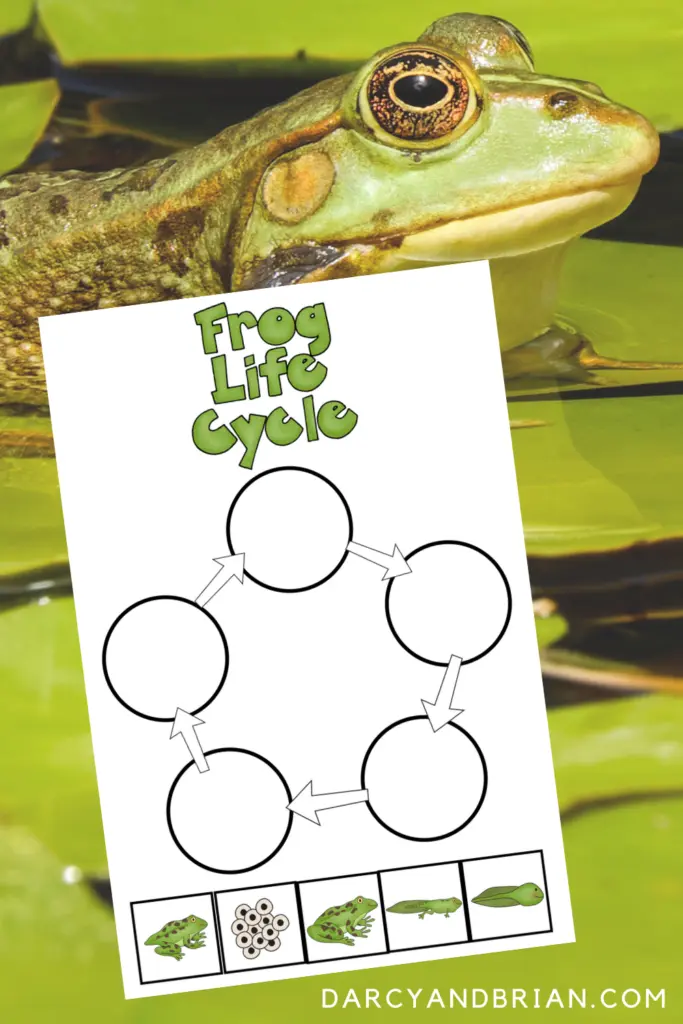
You could also include complementary activities to transform it into a full unit study across several subjects:
Math
Talk with your child about how many stages there are in the life cycle of a frog.
Together with your child, research how many eggs each type of frog lays. The Frog Pets website link above offers a few examples.
Language Arts
Once your child has filled in the stages of a frog’s life cycle, have them write about what they’ve learned.
Depending on your child’s age and abilities, perhaps have them do copywork; simply rewriting the name of each stage or coming up with a sentence or paragraph for each stage of the frog life cycle.
To promote storytelling skills, use this frog paper bag puppet to create a fun frog play and put on a puppet show with your child.
History
Use this opportunity, if you wish, to talk about the discoveries of Lewis and Clark as they made their expedition across the Great Plains.
This Brain Pop video does a decent job of introducing Lewis and Clark to children.
The pair kept extensive journals of their findings, including the discovering of several species of mammals. They also talked about some frogs that they came across in this journal excerpt.
Note: As with all history, it’s a good idea to familiarize yourself with each side’s perspective so you’re better able to share information with your children, answer the bigger questions and tackle larger concepts as they mature. This article offers insight.
Additional Frog Life Cycle Learning Resources and Activities
Round out your study of the frog life cycle by incorporating some hands-on activities and games to extend the learning. Often, using resources to extend learning can lead you on a rabbit trail of learning.
This is where true life-long learners are born; when your kids are eager and invested in discovering about the world around them, on their own.
If you’re homeschooling children of various ages, it’s a good idea to have items on hand to engage younger learners. This enables you to work with older kids with (hopefully) fewer distractions.
This Montessori Frog Life Cycle Puzzle is a fun choice for little hands. These Safari Ltd. figures can also help illustrate the frog life cycle in a tangible way.
This frog STEM balancing and counting game is great for kids of all ages as it incorporates math, science, and logic.
Here are some additional frog life cycle activity ideas:
- Replicate the frog life cycle with different types of pasta or play-doh
- Create a yummy frog life cycle snack for a science project you can eat
- Use pom-poms from your craft stash to create your own frog life cycle model
A seemingly simple concept like the frog life cycle can easily become a week-long unit study when you incorporate other subjects into your learning.
A field trip to a local pond becomes a time for nature journaling and a trip to the library can lead you down rabbit trails you never expected.
More Life Cycle Activities:
- Praying Mantis Life Cycle Lapbook
- Bat Life Cycle Printable Activities
- Butterfly Life Cycle Worksheet
- Ladybug Life Cycle Printables
- Butterfly Life Cycle Ten Frame Addition Worksheet
Get the Printable Frog Life Cycle Worksheet

Darcy is the founder of “Life With Darcy and Brian,” where she combines her love for education, board games, and crafting to create engaging learning experiences for kids. Her creative projects and writing have been featured in outlets like The Toy Insider, CafeMom, Mom.com, Parents.com, Country Living, and The Pioneer Woman.

